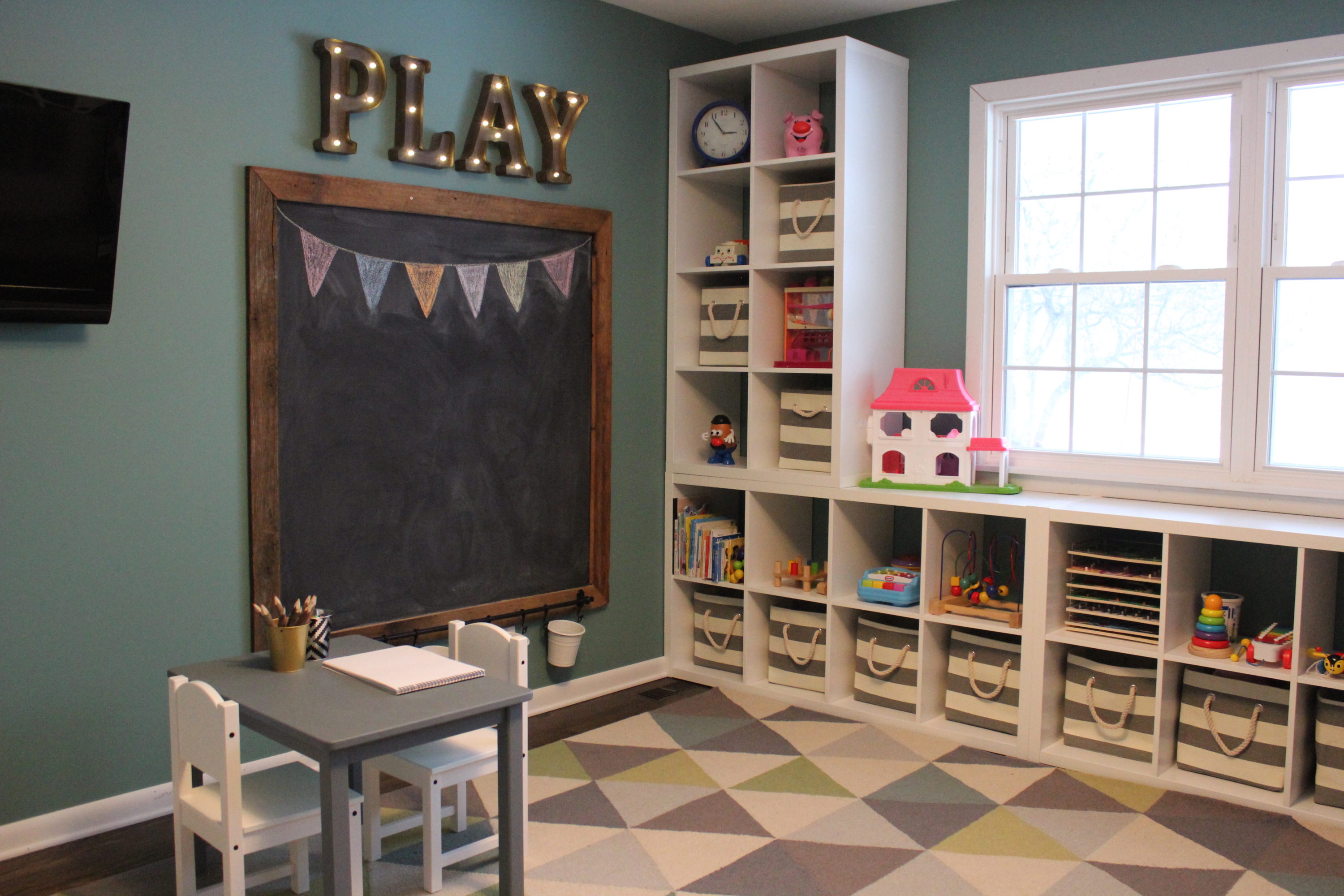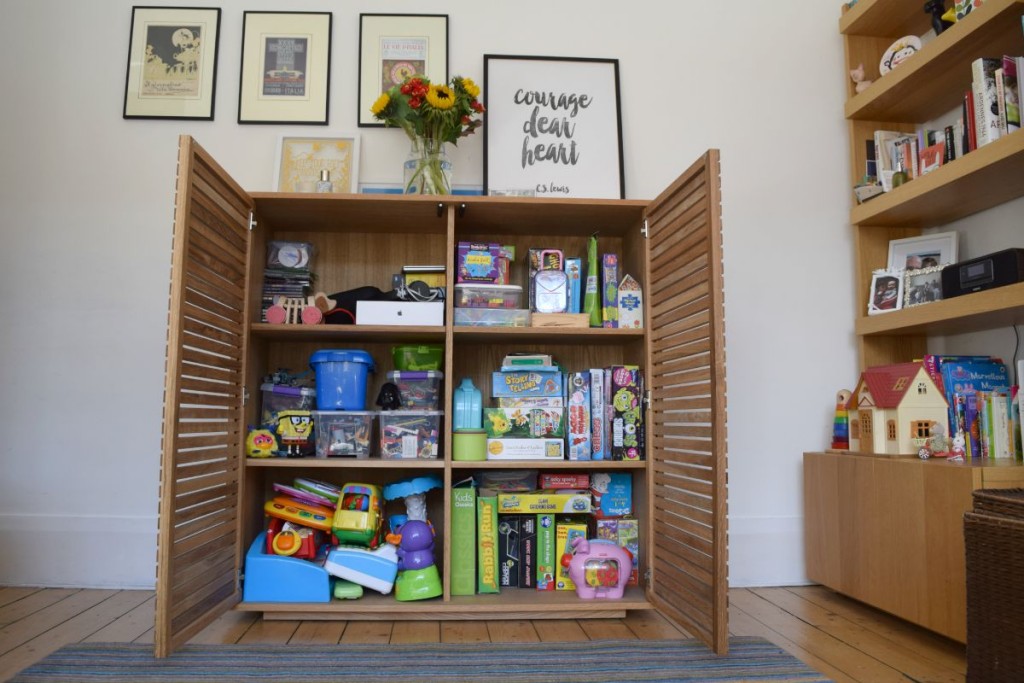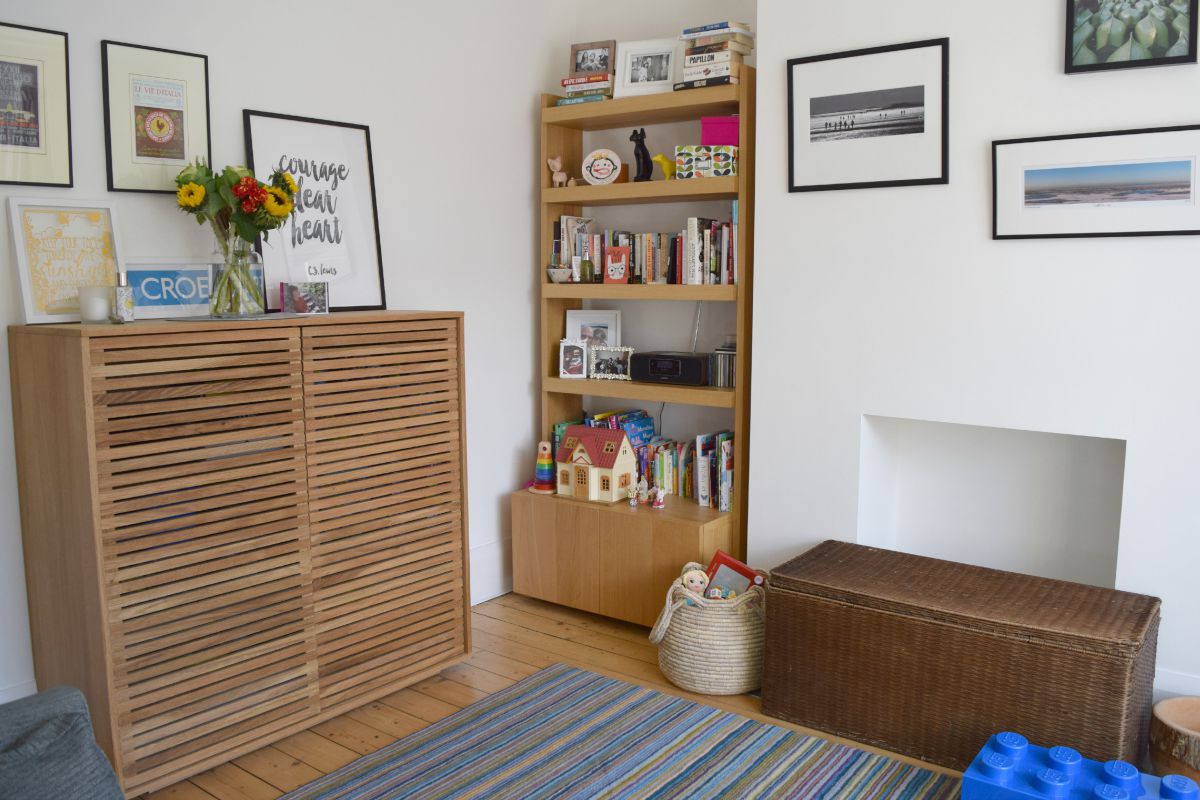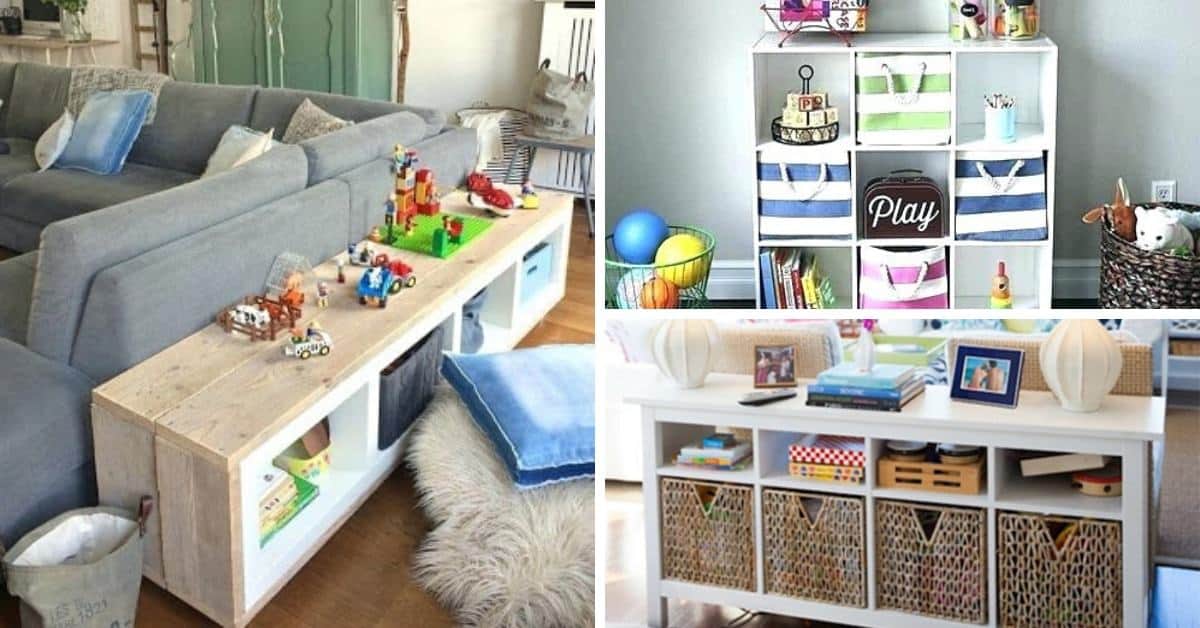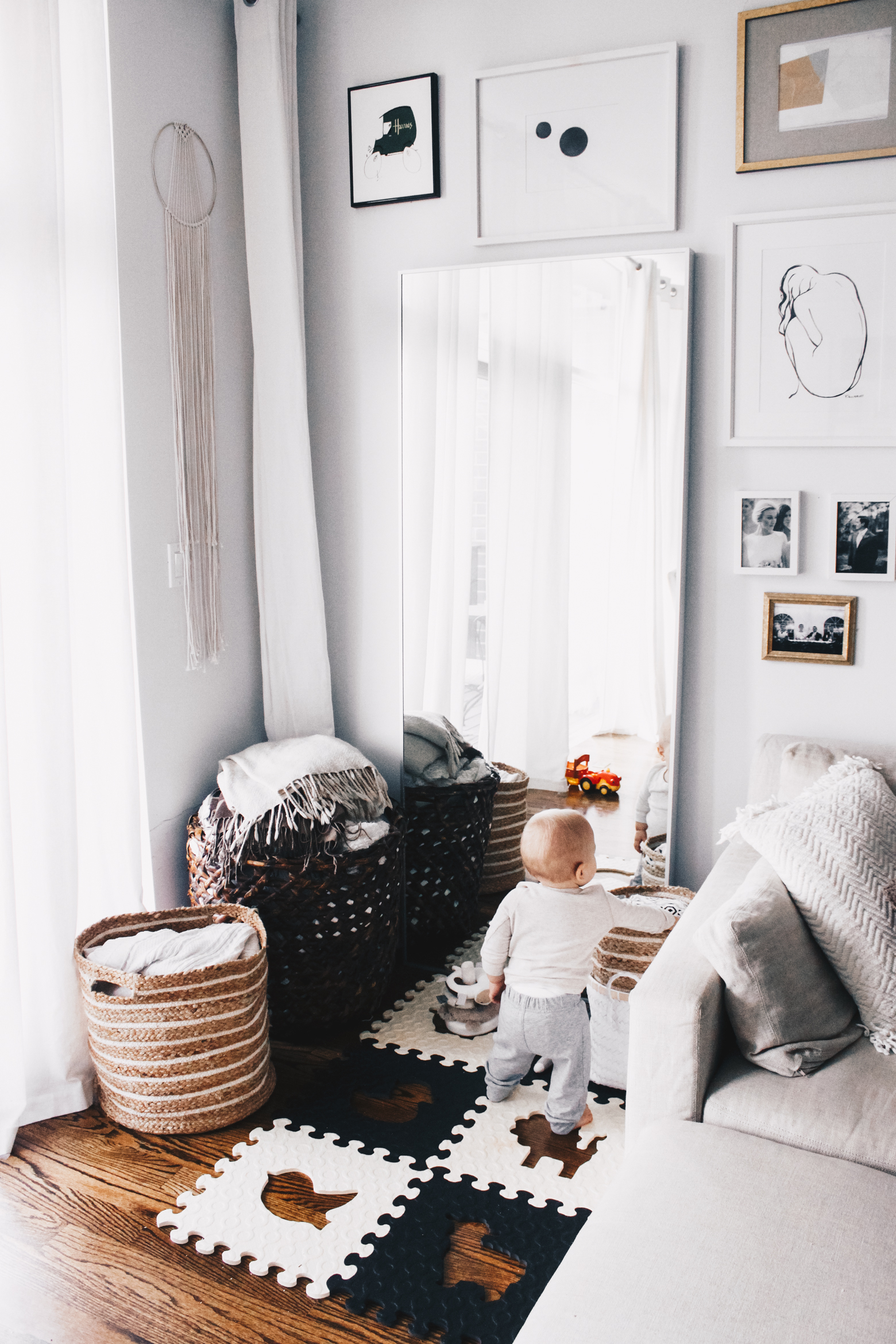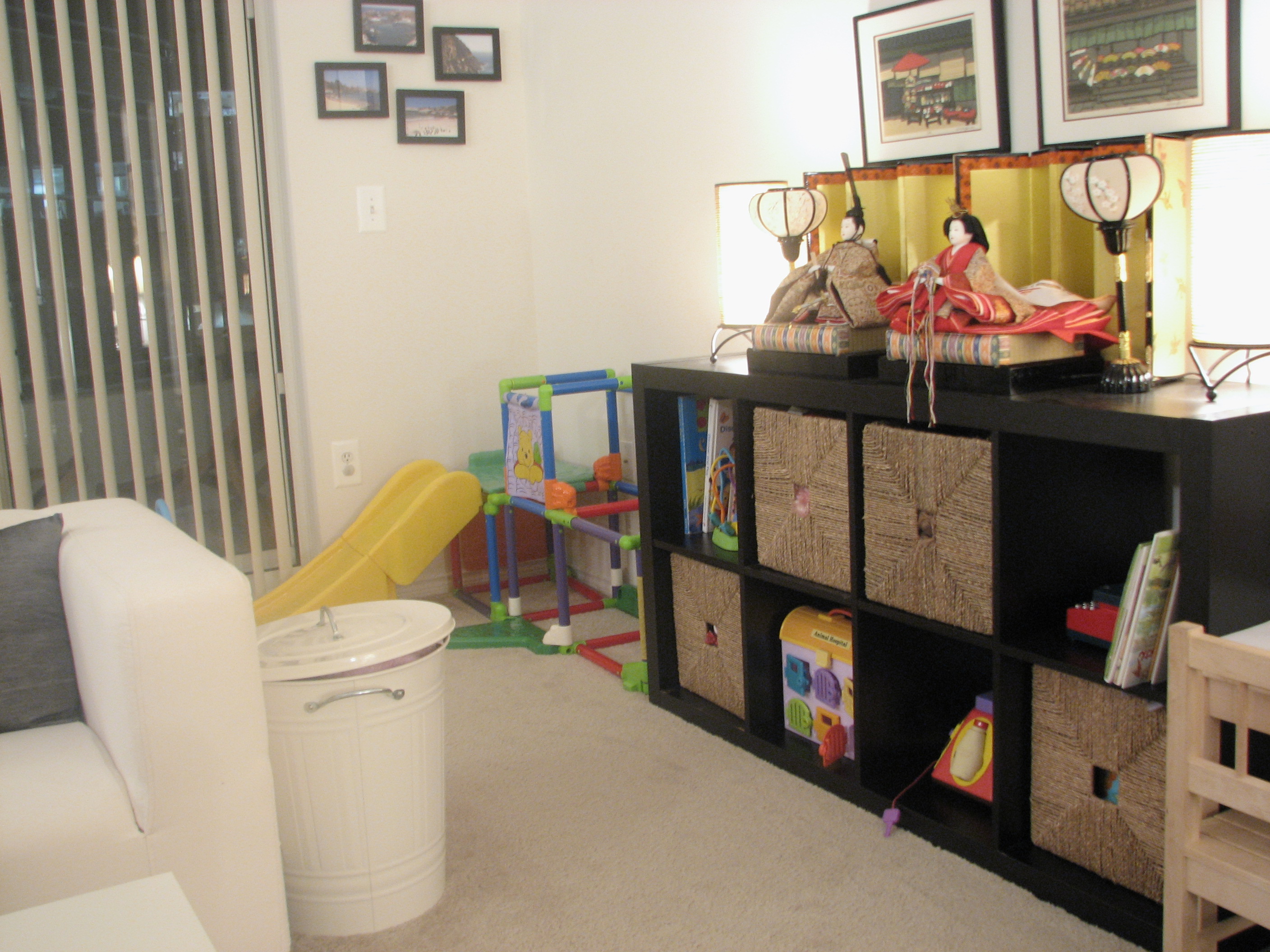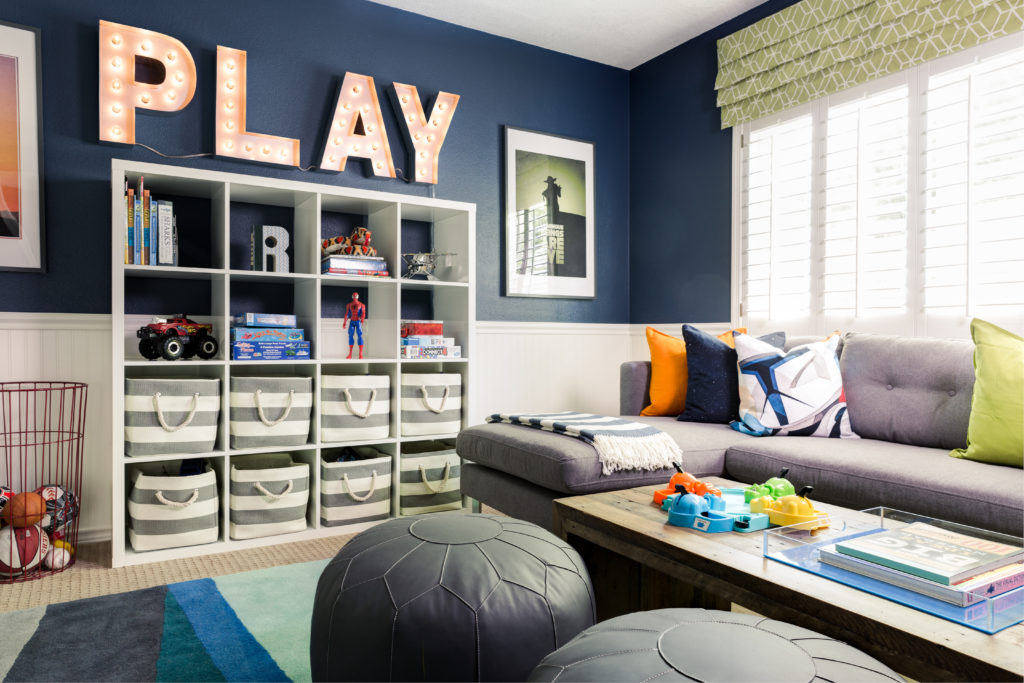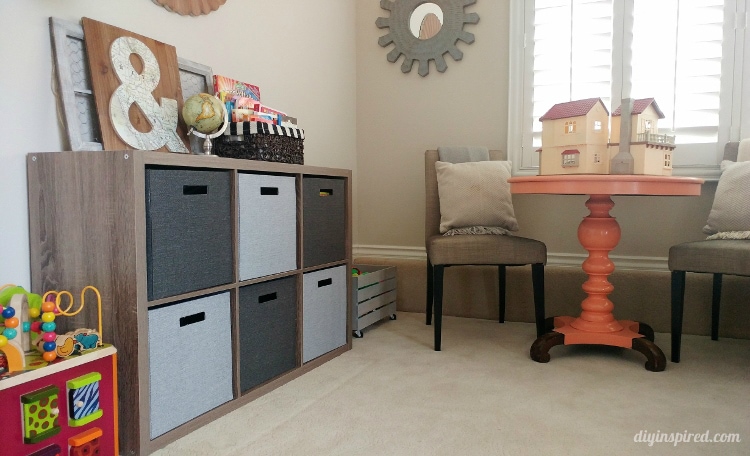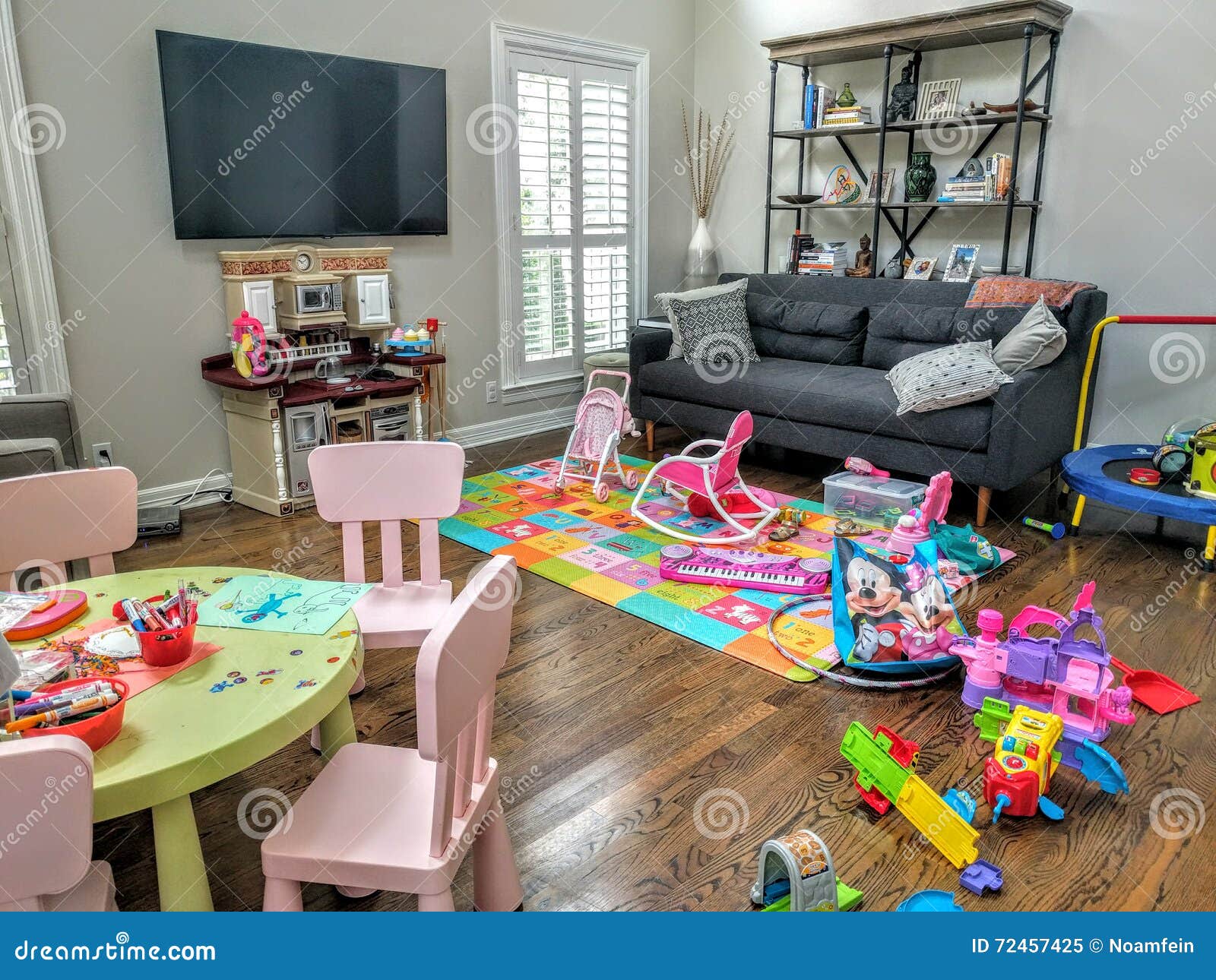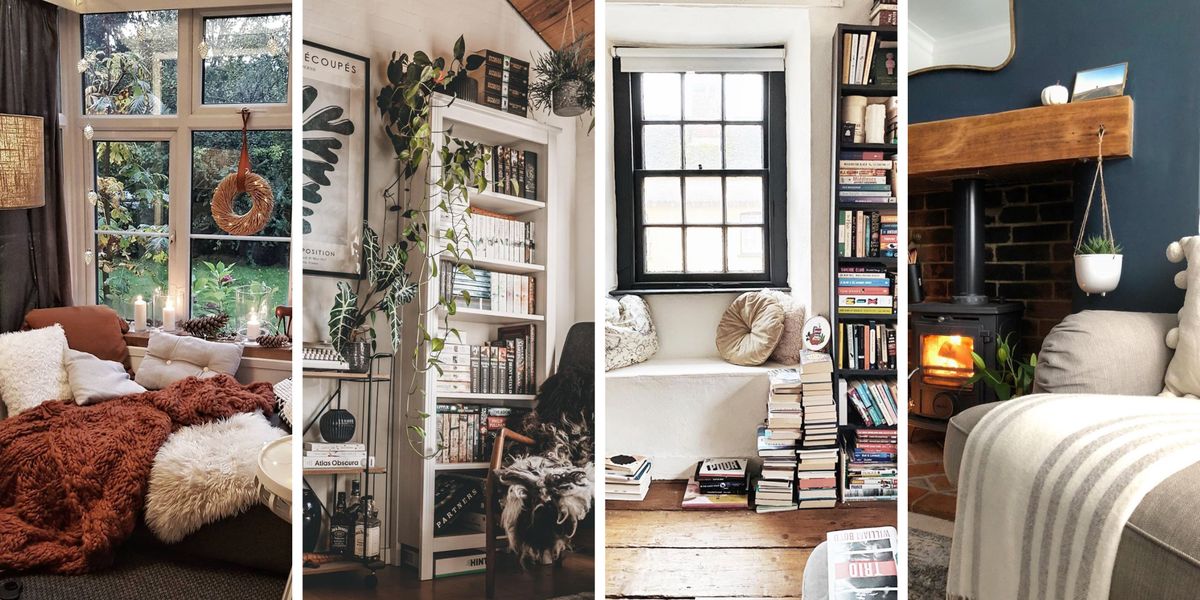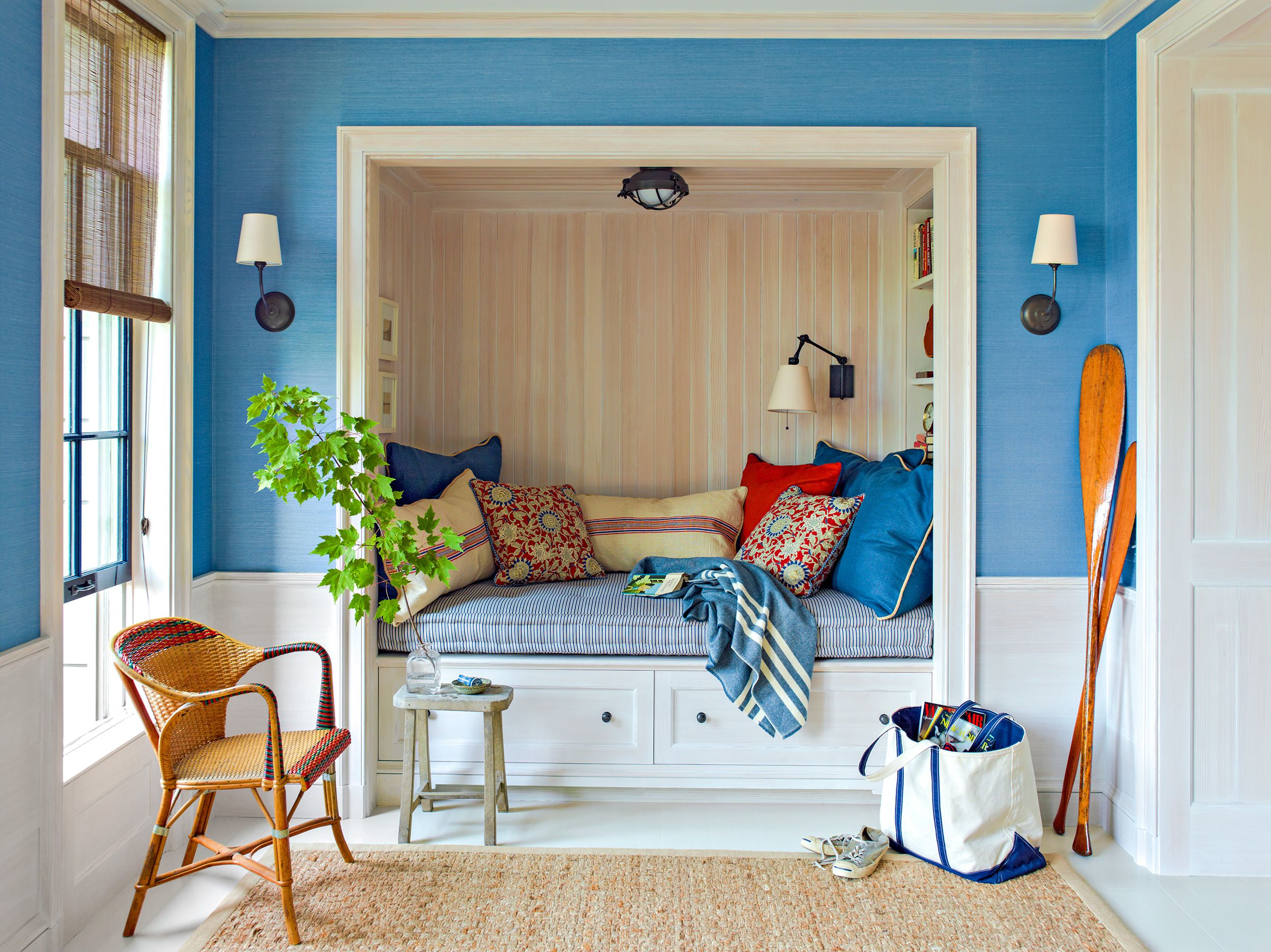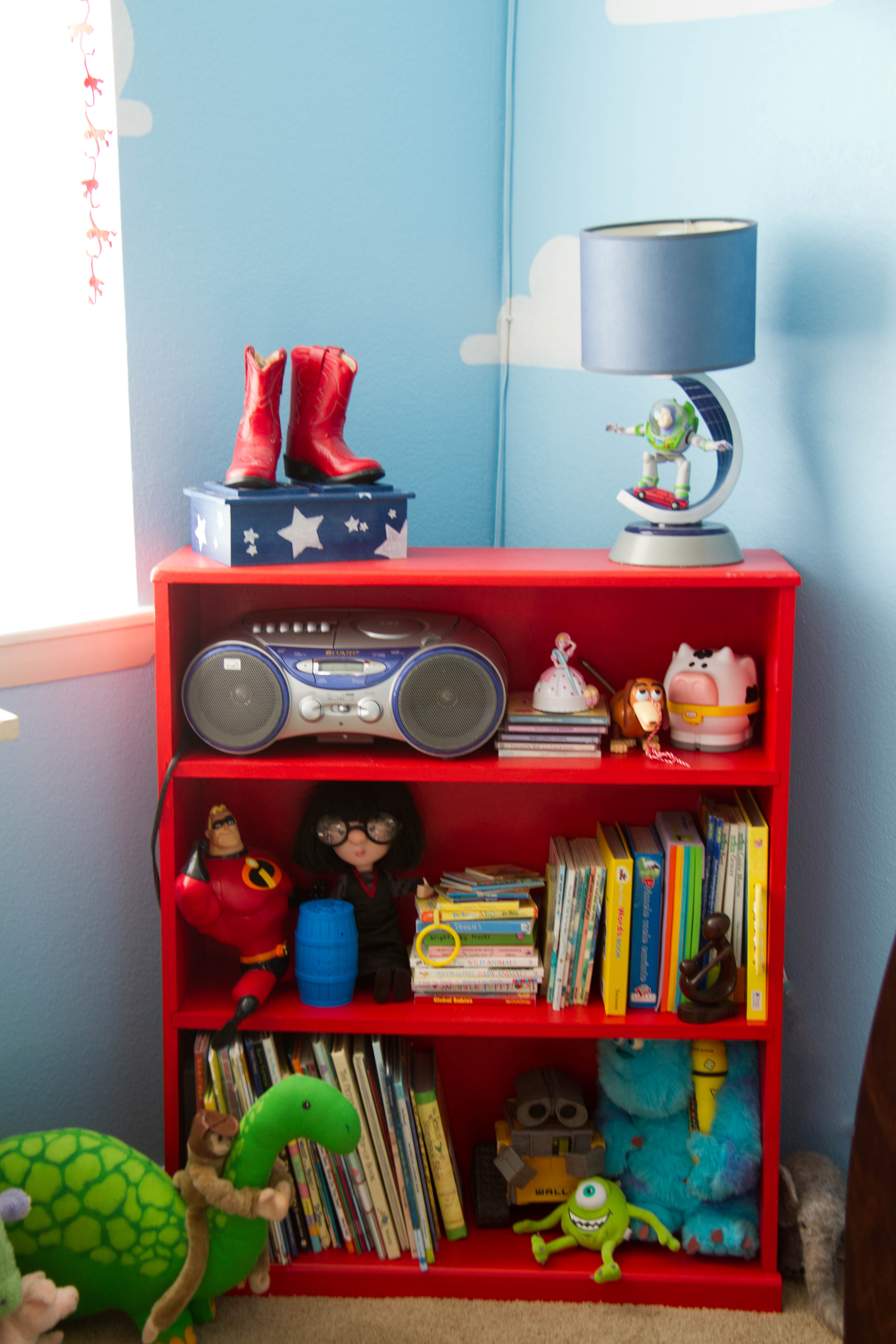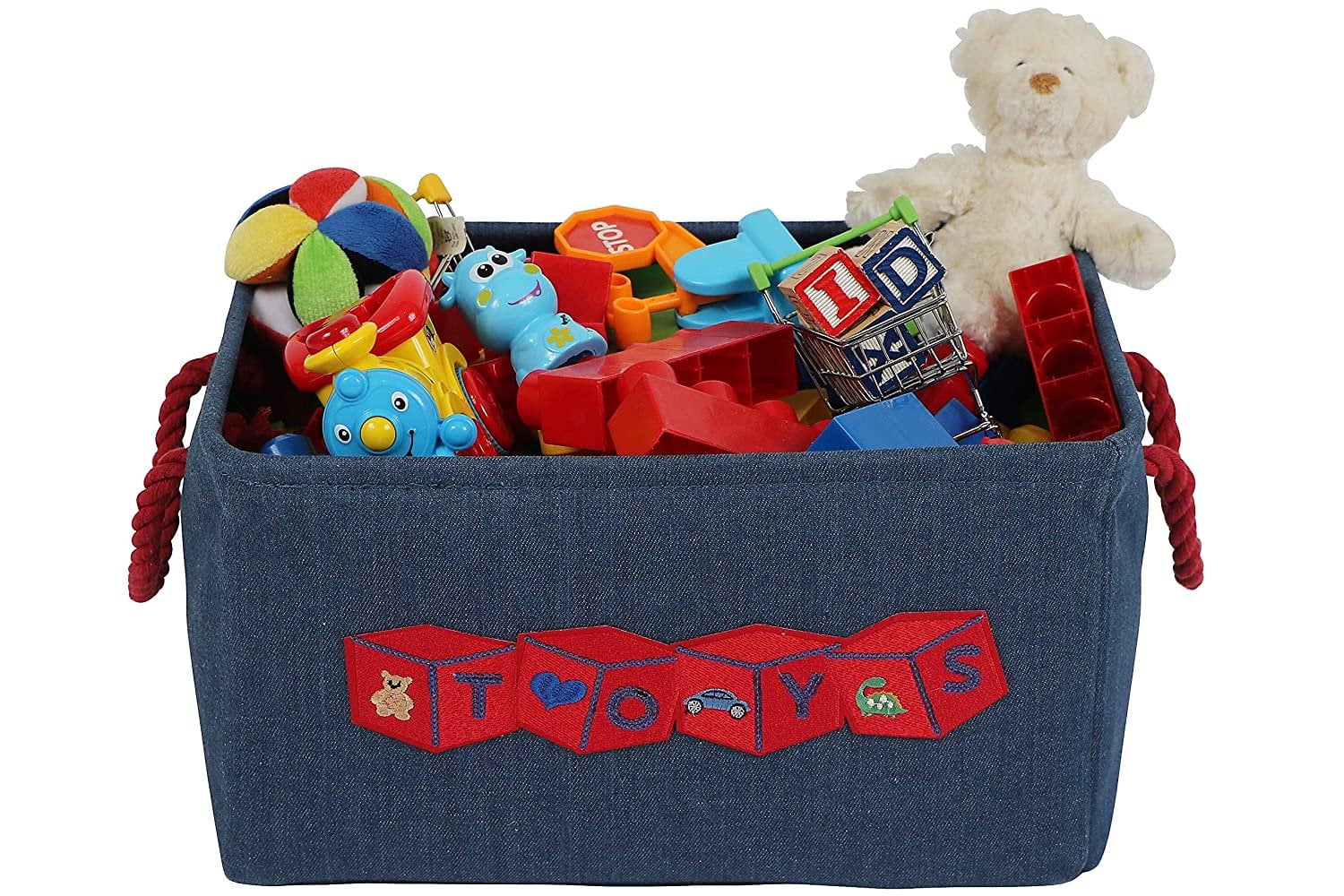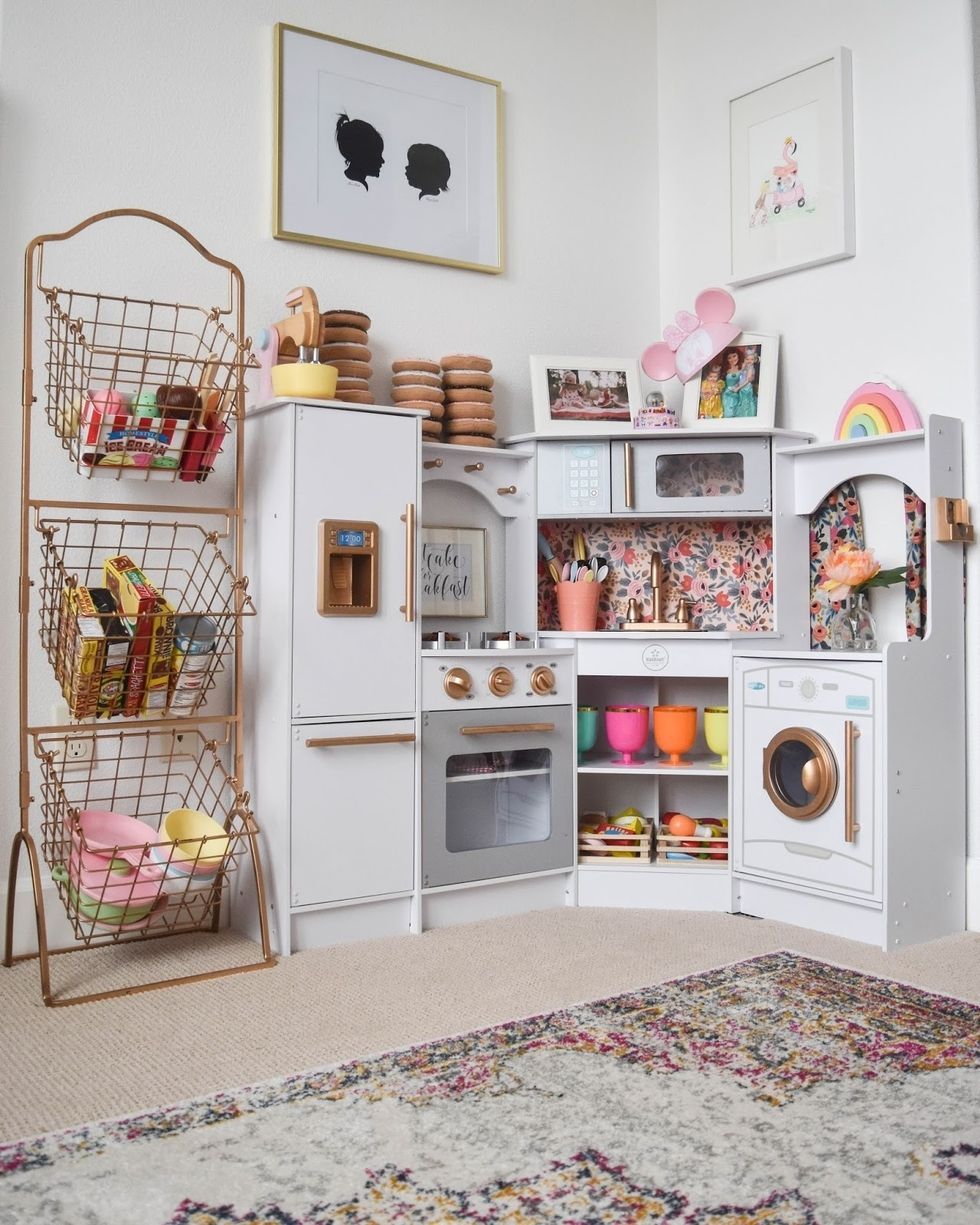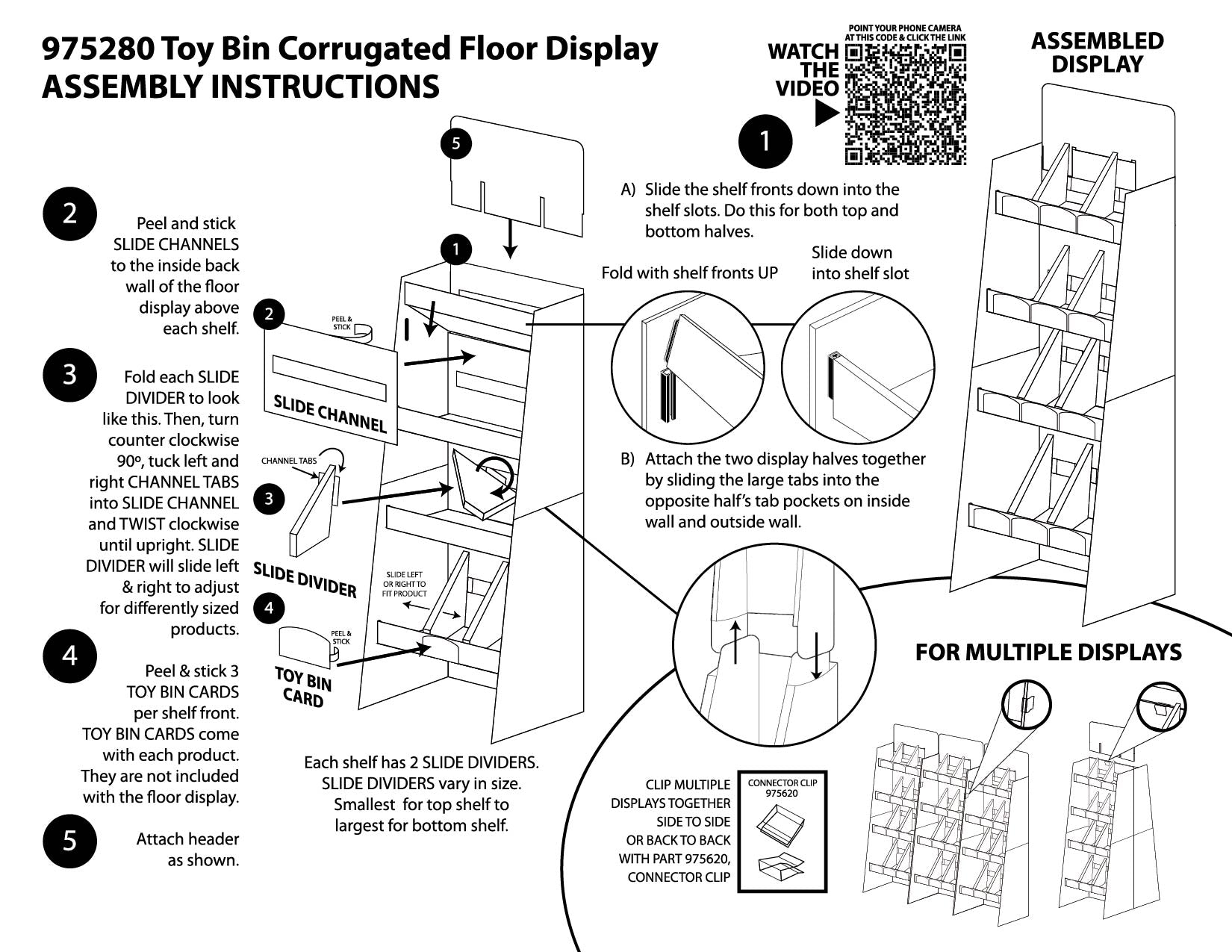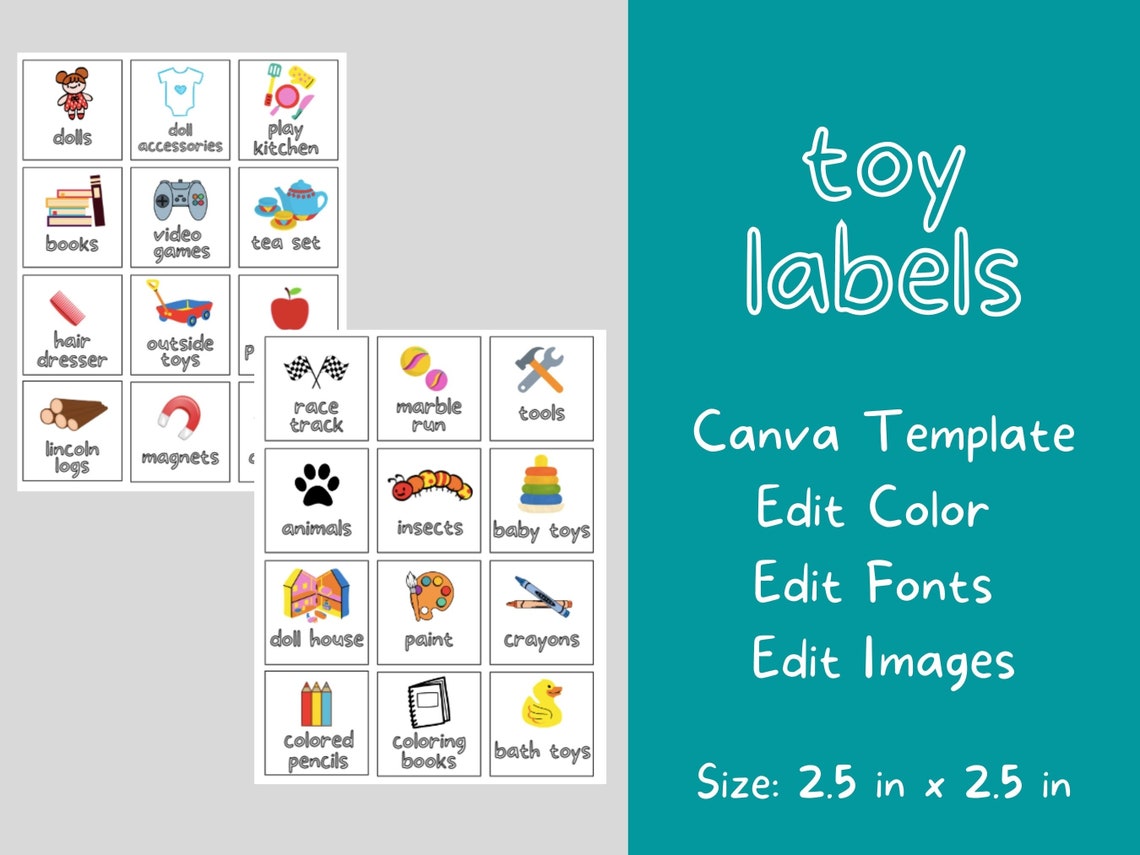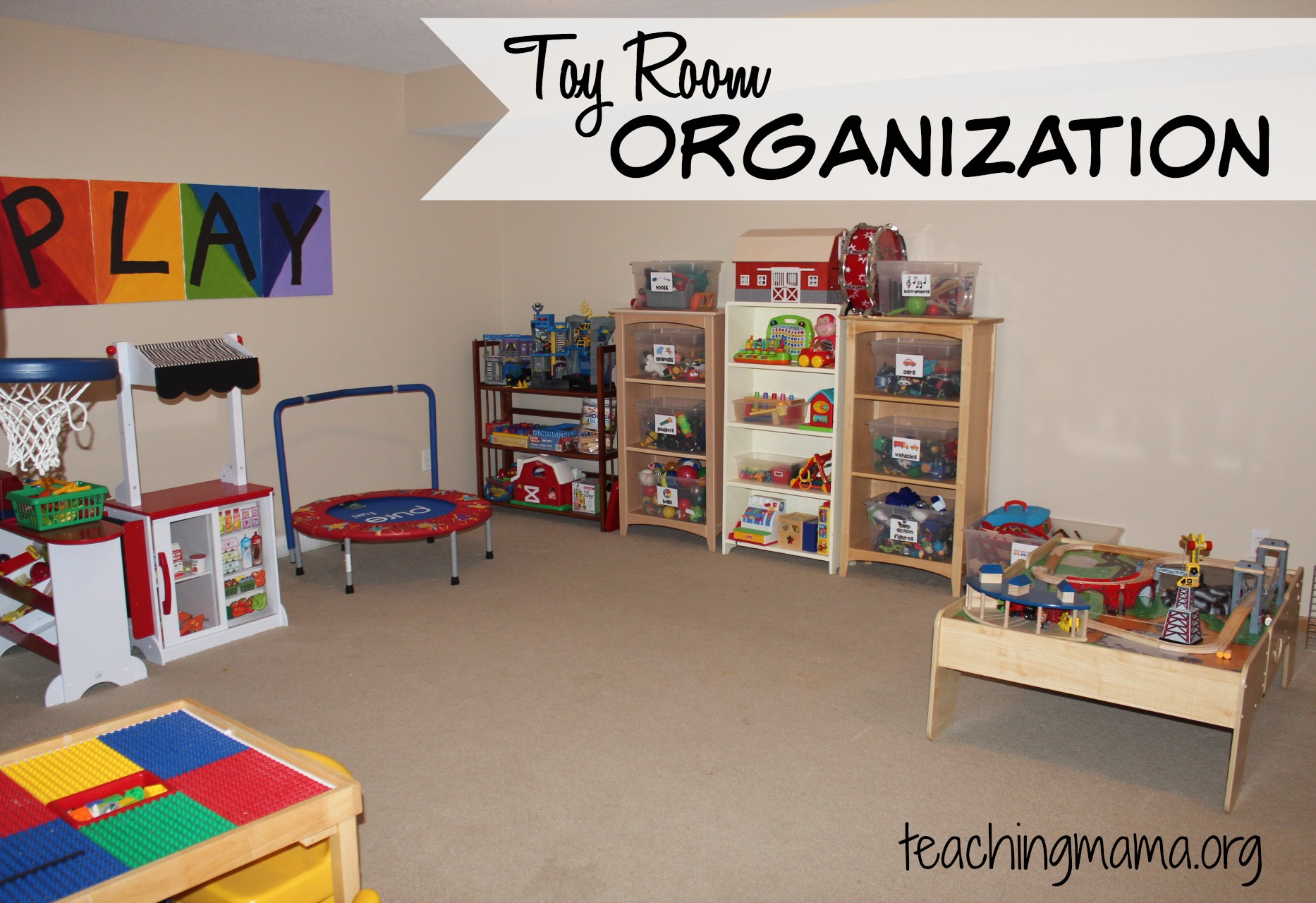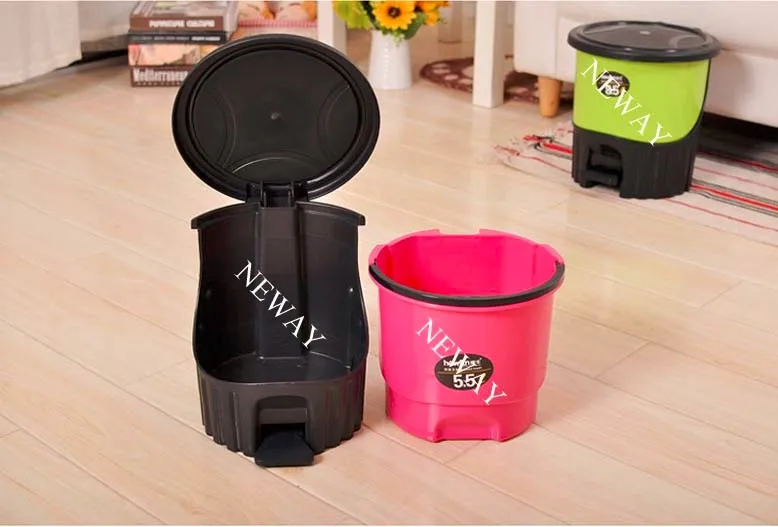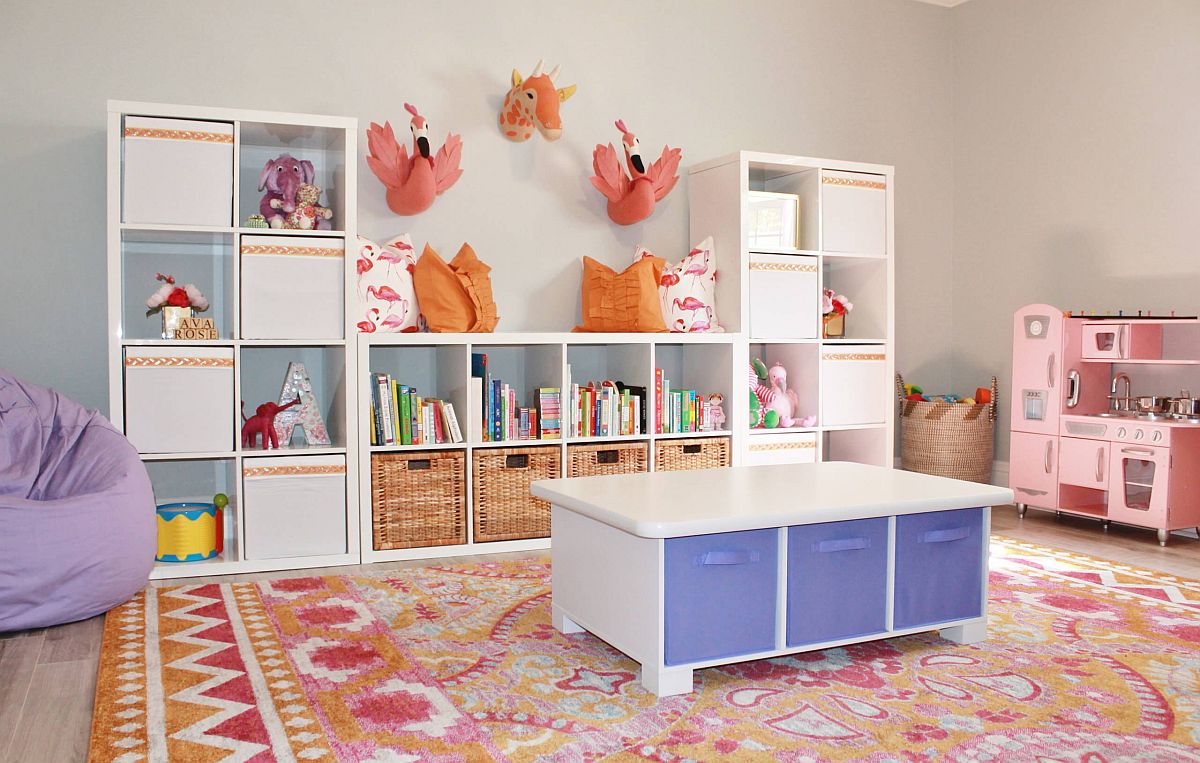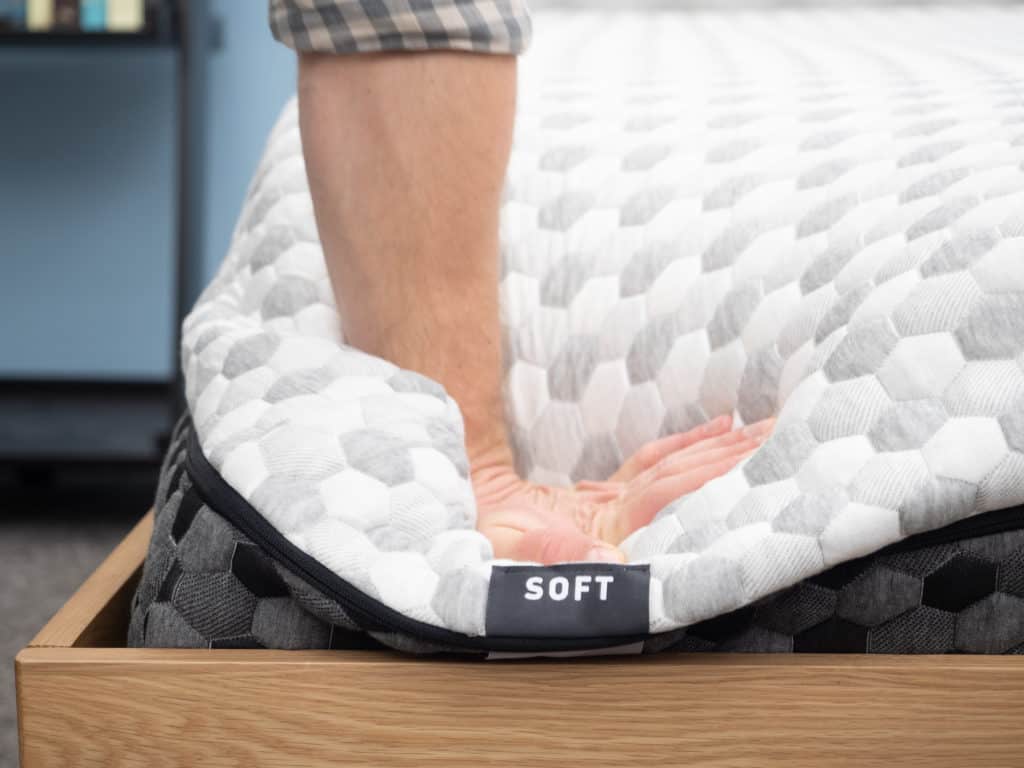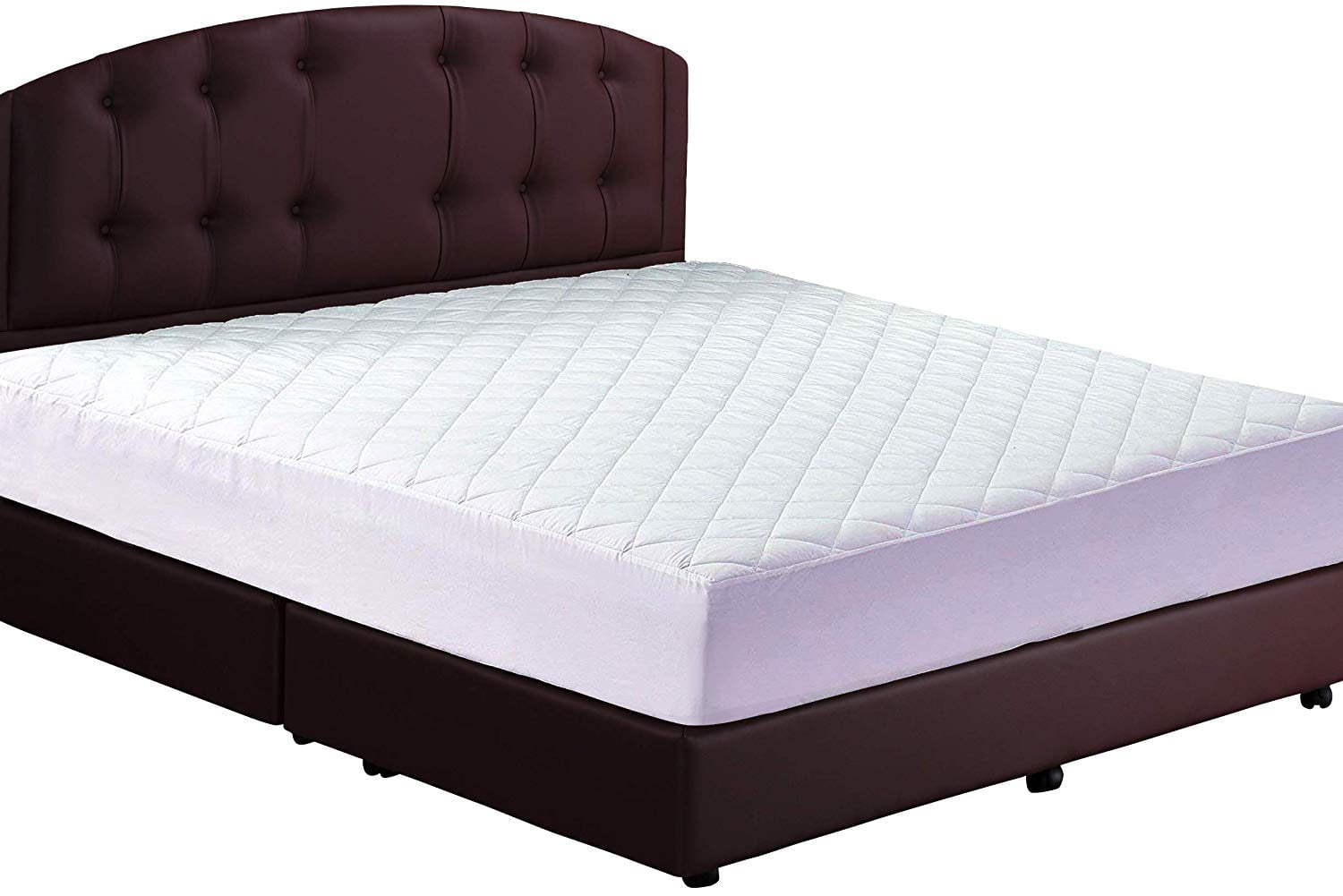If you have kids, chances are your living room has become their designated play area. And while it's great to have them close by, it can also lead to clutter and chaos with toys strewn all over the place. That's why having proper toy storage in your living room is essential for keeping things tidy and organized. One option for toy storage in the living room is a toy chest. This classic piece of furniture not only provides ample space to store toys, but it can also double as a coffee table or extra seating. Look for one with a safety hinge to prevent little fingers from getting pinched. Another popular choice is a toy bin or basket. These come in various sizes and can be easily tucked away in a corner or under a table when not in use. Choose one with a fun design or color to add a playful touch to your living room.1. Toy storage in living room
Having a designated area for toys is half the battle, but keeping them organized is the other half. That's where toy organizers come in. These can be shelves, cubes, or bins that have different compartments for different types of toys. Not only does it keep things neat, but it also makes it easier for kids to find and put away their toys. You can also use labels on the toy organizers to help kids identify where each toy belongs. This not only helps with organization but also promotes independence and responsibility in children.2. Living room toy organization
If you have a smaller living room, you may not have the luxury of a designated play area. In this case, you can create a toy corner in your living room. This can be a small area with a rug, some cushions, and a few toys. It not only provides a designated play space but also adds a cozy and inviting touch to your living room. A toy tent or teepee can also be a fun addition to a toy corner. Kids can use it as a fort or a quiet reading nook. And when not in use, it can be easily folded and stored away.3. Toy corner in living room
If you have a larger living room, you may have the space to create a living room play area. This can be a designated section of the room that is solely dedicated to play. You can use a playpen or baby gate to separate this area from the rest of the room. In this play area, you can have a toy kitchen, a dollhouse, or a train table. It's a great way to keep toys contained and also allows kids to have a larger play area without taking over the entire living room.4. Living room play area
If you have a smaller living room but still want to have a designated play area, a toy nook may be the perfect solution. This can be a small corner of the room that is designated for play and can be easily tucked away when not in use. A toy hammock can be a great option for a toy nook. It keeps toys off the floor and adds a playful touch to the room. You can also use a bookshelf or storage cube to keep toys organized and within reach.5. Toy nook in living room
Instead of hiding away all the toys, why not turn them into a display in your living room? This can be done by using open shelves or clear storage bins to showcase the toys. It not only adds a decorative element to your living room but also makes it easier for kids to find and put away their toys. You can also create a themed display by showcasing a specific type of toy, such as stuffed animals or action figures. This can add a fun and personalized touch to your living room.6. Living room toy display
A toy basket is a simple and versatile solution for toy storage in the living room. It can be used to store larger toys or a mix of different types of toys. You can also use multiple baskets to separate toys by category, such as building blocks, puzzles, or stuffed animals. For a stylish touch, choose a decorative basket that complements your living room decor. It can also be used as a laundry basket or for storing extra blankets and pillows when not in use.7. Toy basket in living room
If you have a large collection of toys, a toy shelf may be a better option for storage. This can be a bookshelf, a cube organizer, or a set of shelves specifically designed for toy storage. You can use bins or baskets to keep toys organized and add a pop of color to the room. A toy car track or a train set can also be displayed on a shelf, making it easily accessible for playtime and adding a fun element to the room.8. Living room toy shelf
If you prefer a more minimalist look in your living room, you can use storage bins to keep toys out of sight. These can be stored under a coffee table or in a cabinet and pulled out when needed. Look for bins with lids or ones that can be easily stacked to save space. For an organized look, label each bin with the type of toys it contains. You can also use different colored bins for each child to make it easier for them to find their toys.9. Toy bin in living room
If you're short on space in your living room, there are still plenty of toy storage solutions that can help you keep things organized. You can use over-the-door organizers to store smaller toys or hanging shelves to keep books and art supplies within reach. For larger toys, consider using under-the-bed storage or rolling carts that can be easily tucked away when not in use. And don't forget about utilizing the vertical space in your living room by using wall shelves or hanging baskets for toy storage.10. Living room toy storage solutions
The Importance of a Toy Area in Your Living Room

Creating a Functional and Organized Living Space
 When designing your living room, it's important to consider the needs of everyone in your household. This includes children, who often have their own set of toys and belongings that can quickly clutter up a space. That's why incorporating a toy area in your living room can be a game-changer for both parents and kids.
A designated toy area allows for a functional and organized living space. It gives children a designated space to play and keeps their toys contained, preventing them from being scattered throughout the room. This not only makes clean-up easier, but it also creates a safer environment by minimizing tripping hazards.
Having a designated toy area also promotes independence and creativity in children.
They can easily access their toys and play without constant supervision, giving parents a chance to relax and enjoy their own space. It also encourages children to use their imagination and come up with new ways to play with their toys.
When designing your living room, it's important to consider the needs of everyone in your household. This includes children, who often have their own set of toys and belongings that can quickly clutter up a space. That's why incorporating a toy area in your living room can be a game-changer for both parents and kids.
A designated toy area allows for a functional and organized living space. It gives children a designated space to play and keeps their toys contained, preventing them from being scattered throughout the room. This not only makes clean-up easier, but it also creates a safer environment by minimizing tripping hazards.
Having a designated toy area also promotes independence and creativity in children.
They can easily access their toys and play without constant supervision, giving parents a chance to relax and enjoy their own space. It also encourages children to use their imagination and come up with new ways to play with their toys.
A Seamless Integration with Your Living Room Design
 One of the biggest concerns when incorporating a toy area in the living room is maintaining a cohesive design. After all, you want your living room to be a welcoming and aesthetically pleasing space for both adults and children. Fortunately, there are many ways to seamlessly integrate a toy area into your living room design.
One option is to use furniture pieces that can double as storage for toys.
This could include ottomans, coffee tables with hidden compartments, or even a storage bench. These functional pieces not only provide extra seating but also keep toys out of sight when not in use.
Another option is to use decorative baskets or bins to store toys. These can be placed on shelves or in designated areas of the living room, adding to the overall design aesthetic while still keeping toys organized and easily accessible for children.
One of the biggest concerns when incorporating a toy area in the living room is maintaining a cohesive design. After all, you want your living room to be a welcoming and aesthetically pleasing space for both adults and children. Fortunately, there are many ways to seamlessly integrate a toy area into your living room design.
One option is to use furniture pieces that can double as storage for toys.
This could include ottomans, coffee tables with hidden compartments, or even a storage bench. These functional pieces not only provide extra seating but also keep toys out of sight when not in use.
Another option is to use decorative baskets or bins to store toys. These can be placed on shelves or in designated areas of the living room, adding to the overall design aesthetic while still keeping toys organized and easily accessible for children.




